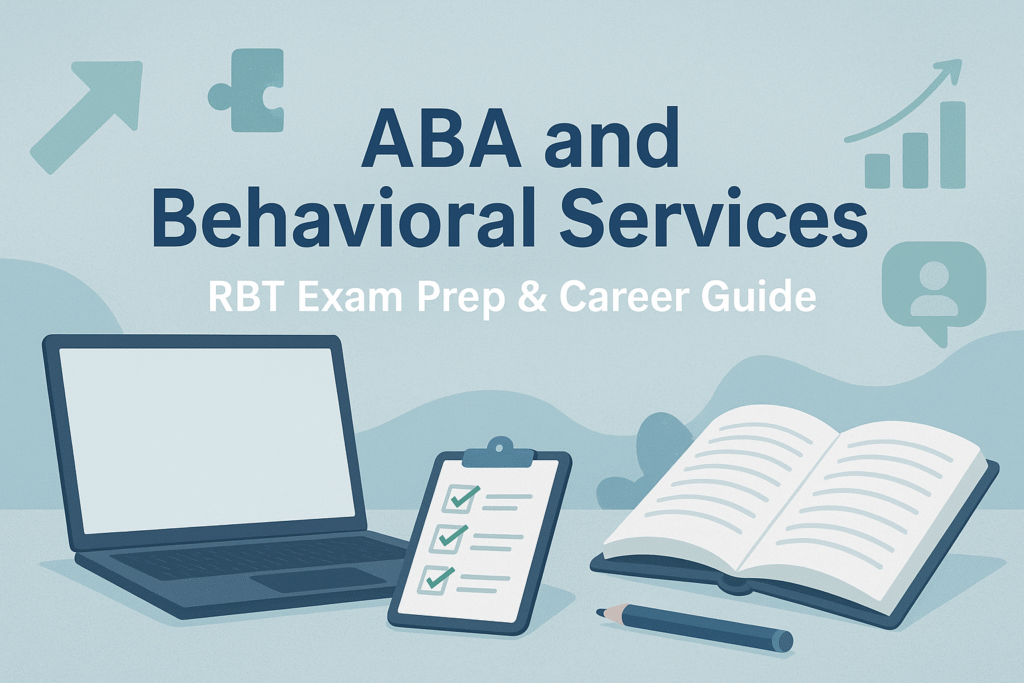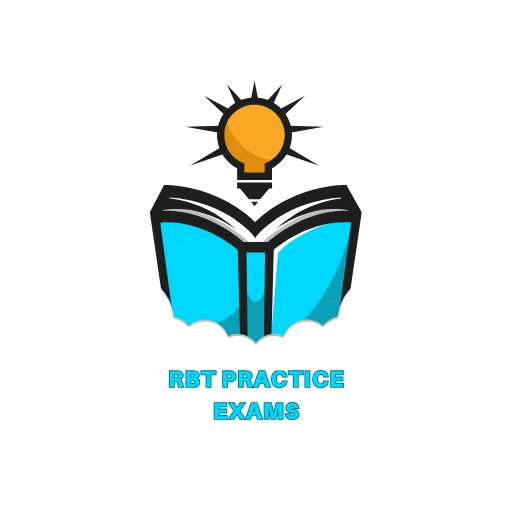If you’ve been researching a career in applied behavior analysis, you’ve probably come across the phrase ABA and behavioral services. These services are designed to support individuals of all ages in improving communication, learning skills, and building independence. They are also the foundation of work for many aspiring Registered Behavior Technicians (RBTs), who play an essential role in delivering ABA therapy.
In this guide, we’ll break down what ABA and behavioral services mean, how they work, and why they matter if you’re preparing for your RBT certification.
Table of Contents

What Are ABA and Behavioral Services?
Applied Behavior Analysis (ABA) is a scientific approach to understanding behavior and learning. It focuses on how environment, reinforcement, and teaching strategies shape positive change. According to Wikipedia , ABA has become one of the most widely used methods for supporting children and adults with developmental or behavioral challenges.
Behavioral services include interventions, therapy plans, and support systems built around ABA principles. These services may cover:
Skill-building (communication, social, daily living)
Behavior reduction plans (reducing harmful or disruptive actions)
Parent and caregiver training
School-based behavioral programs
How ABA Therapy Works in Practice?
At its core, ABA is data-driven. A therapist identifies a target behavior, sets measurable goals, and uses structured teaching strategies to encourage progress. Reinforcement (such as praise, tokens, or rewards) is used to strengthen positive actions.
For example, if a child is learning to request help, the therapist may prompt them to use words or a gesture. Each successful attempt is reinforced until it becomes natural. Over time, support is reduced, allowing independence to grow.
Common Settings Where ABA Services Are Used
ABA and behavioral services are highly flexible. You’ll often find them in:
Schools – helping students with behavior plans or social skills training
Clinics – structured sessions with BCBA-supervised therapists
Homes – where RBTs provide one-on-one support in natural settings
Community programs – teaching safety, social, and life skills in real-world situations
This variety allows ABA professionals to work across many environments, tailoring support to individual needs.
Who Provides ABA and Behavioral Services?
Different professionals may provide ABA-based support, including:
Board Certified Behavior Analysts (BCBAs) design and oversee therapy programs
RBTs (Registered Behavior Technicians) implement therapy under supervision
Parents and caregivers – often trained to continue strategies at home
To learn about the official requirements for becoming certified, the BACB is the governing body that sets global standards.
Benefits for Children and Adults
ABA services are often associated with autism therapy, but they reach far beyond that. Benefits include:
Improving communication for non-verbal children
Building independence in daily living skills
Reducing harmful behaviors and replacing them with positive ones
Supporting adults with developmental delays or behavioral health challenges
Enhancing quality of life for families
Getting Started in an ABA Career
For many people, the first step into the ABA field is becoming an RBT. It’s an entry-level credential that allows you to provide direct therapy while working under a BCBA’s supervision.
The role of an RBT involves implementing therapy plans, recording data, and supporting clients in reaching their goals. If you’re considering this path, preparing for the RBT exam is essential.
Why the RBT Exam Matters for ABA Services?
The RBT exam ensures that technicians understand core ABA principles and can apply them correctly. Passing this test is what allows you to begin working legally as an RBT.
The exam covers areas like:
Measurement and data collection
Assessment procedures
Skill acquisition
Behavior reduction strategies
Professional conduct and scope of practice
Since ABA and behavioral services rely on consistent, high-quality delivery, the RBT exam is a safeguard for both clients and professionals.
Best Study Strategies for RBT Certification
Preparing for the RBT exam can feel overwhelming, but with the right tools, it becomes manageable. Here are some proven strategies:
Use practice exams regularly – A rbt practice exam helps you identify weak areas and improve test readiness.
Simulate testing conditions – Taking a rbt mock test under timed conditions mirrors the real exam and reduces test anxiety.
Break content into small sections – Review one topic at a time, focusing on mastery before moving forward.
Track your progress – A structured rbt practice test lets you measure improvement over time.
Stay consistent – Short daily study sessions are more effective than cramming.
FAQs About ABA and Behavioral Services
What are examples of behavioral services? Behavioral services can include ABA therapy, parent training, classroom behavior support, social skills programs, and community-based interventions.
Is ABA only for autism? No. While ABA is well-known for its effectiveness with autism, it is also used for ADHD, developmental delays, behavior disorders, and skill development in adults.
How do I become an RBT? You’ll need to complete 40 hours of training, pass a competency assessment, and then pass the RBT exam through the BACB .
How is ABA therapy different from other therapies? Unlike talk therapy or counseling, ABA is focused on observable, measurable behavior and uses reinforcement strategies to create lasting change.
Conclusion
ABA and behavioral services play a vital role in helping people build independence, develop skills, and improve their quality of life. For aspiring professionals, becoming an RBT is the first step toward making an impact in this field.
If you’re serious about passing the RBT exam and starting your ABA career, begin today with a rbt practice exam . With the right preparation, you can feel confident walking into the exam room and stepping into a meaningful career in behavioral services.
